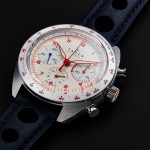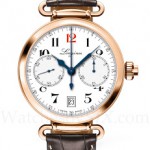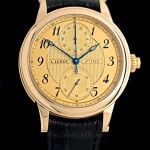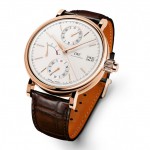Farer Combines the Monopusher Chronograph and GMT
A useful combination in Farer colours.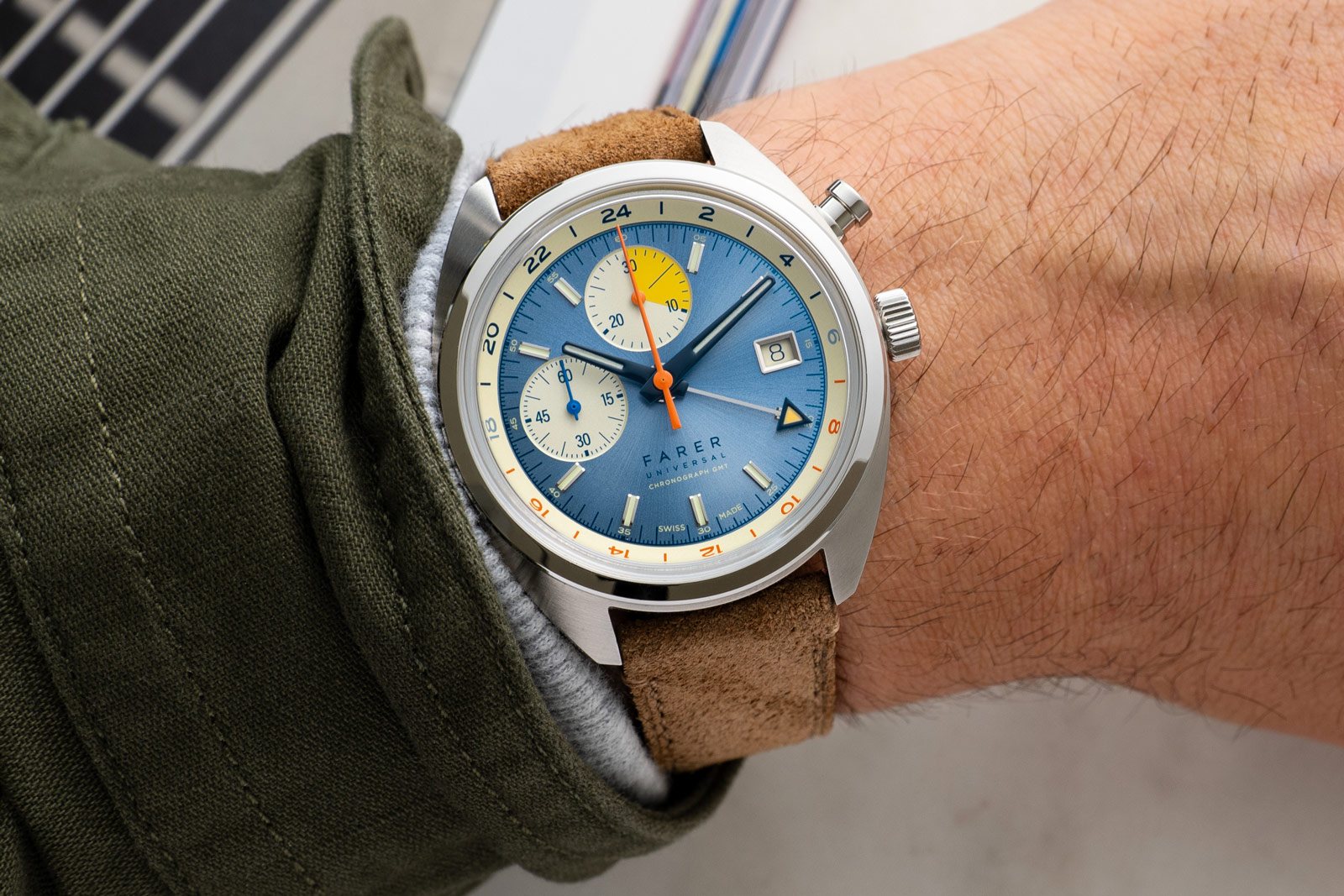
Farer unveils the Monopusher GMT in two variants, Cobb and Segrave, names might be familiar to those following the brand, as they were also the names of its now-discontinued single-button chronograph models. The new Monopusher GMT offerings are essentially identical in design to their respective predecessors but now sport a second time zone. Both models share the same cushion-shaped stainless steel case, similar to that used for the Chronograph Hand-Wound, but thicker to accommodate the triple-stacked hands in the centre.
Initial thoughts
Micro brands occupy a unique niche in the market. They often equip their watches with no-frills but cost-efficient ETA or Selita calibres, or even cheaper movements, but set themselves apart aesthetically while excelling at marketing online.
Farer is a perfect example of this, which is not necessarily a bad thing. The hand-wind Sellita calibre inside the Monopusher GMT is elaboré grade, but still basic. Farer, however, has done a good job at dressing it up.
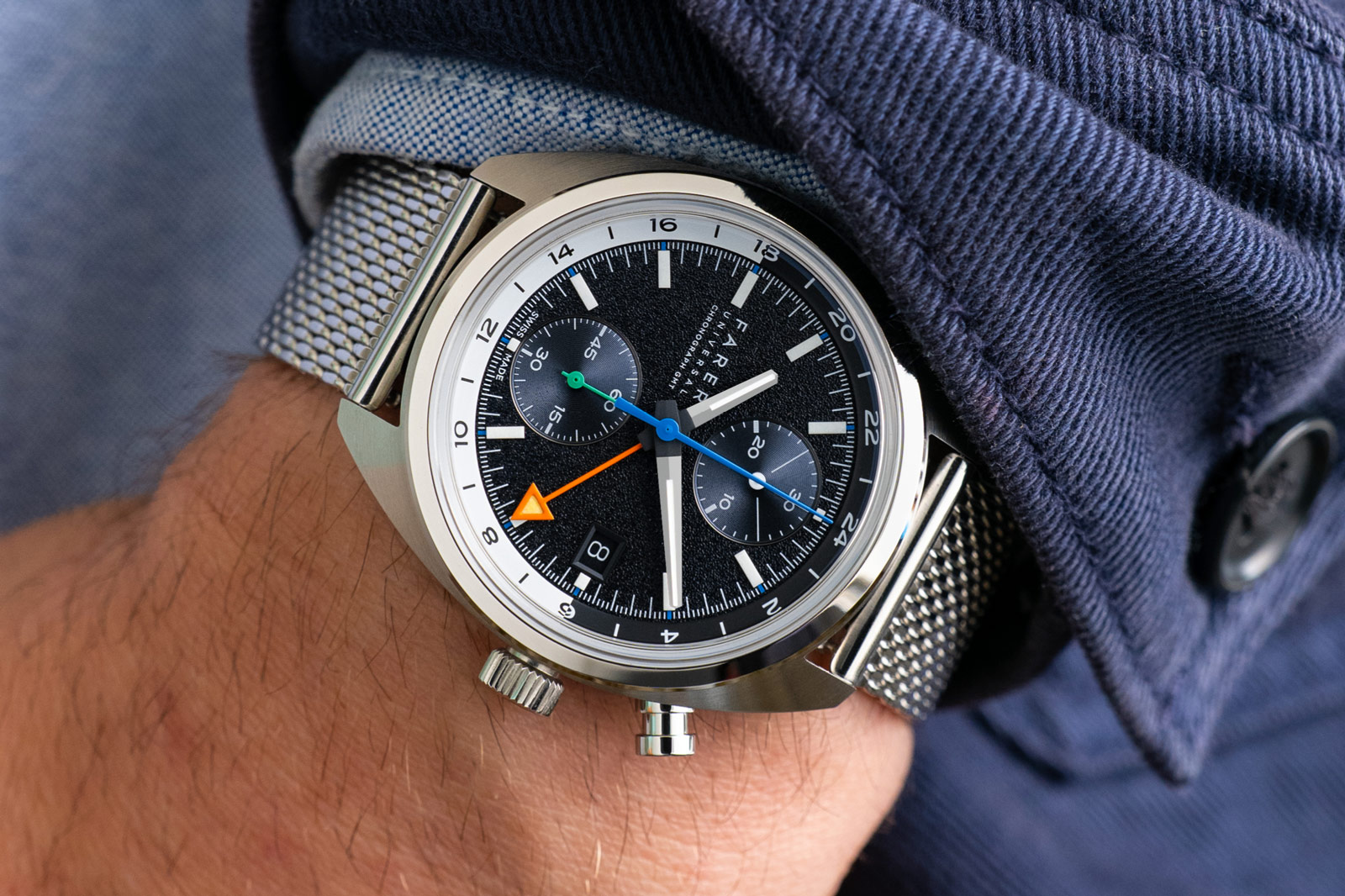
The Segrave on a “Milanese” bracelet
And over on the front, the overall design is simple and clearly vintage inspired, but still manages to possess the Farer aesthetic thanks to its use of geometric shapes and primary colours. The cushion-shaped case has a familiar 1970s style, but it stands out with a knurled surface on the recessed case sides.
Priced at US$2,195, the Farer Monopusher GMT is priced similar to its “micro” brand competitors but offers good value compared to establishment brands like Longines.
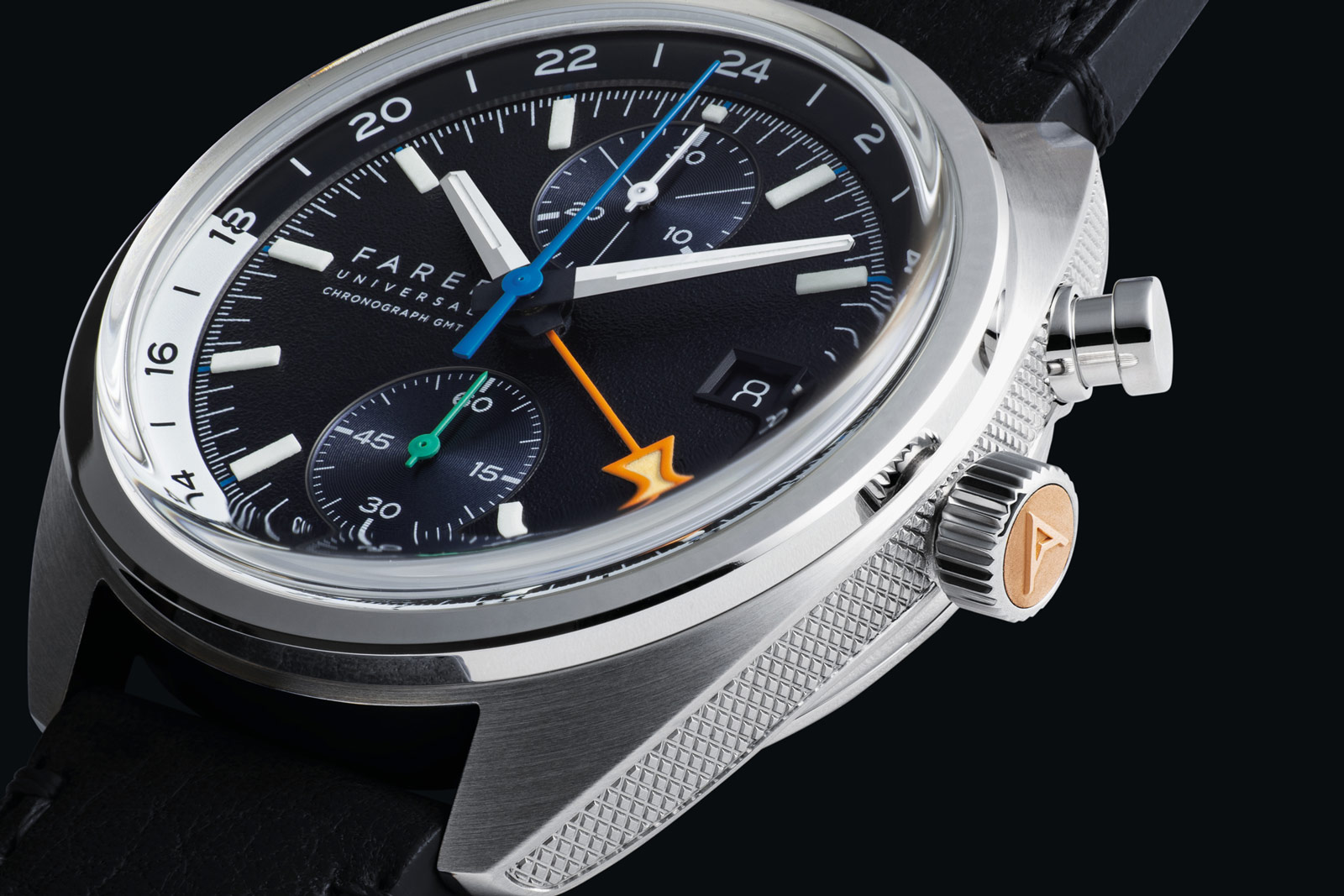
One button, two time zones
Made of stainless steel, the case of the Monopusher GMT is 41 mm in diameter and 14.5 mm thick. Water resistant to 100 m, the case wears a lot smaller than the specs, as 2.25 mm of its thickness is the tall domed crystal. Plus the case is only 44 mm lug-to-lug due to the compact cushion design.
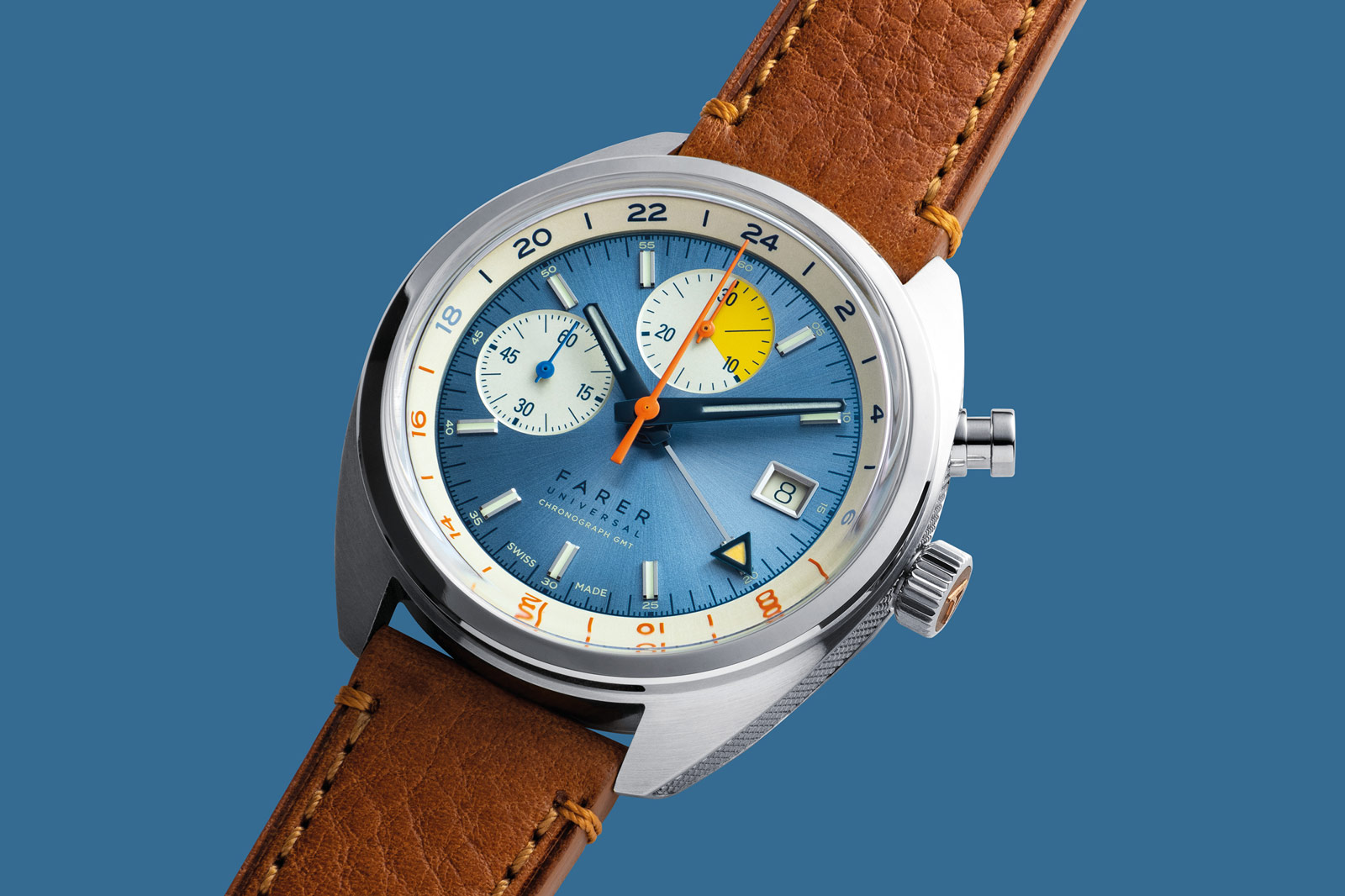
The 44 mm lug-to-lug case makes its more wearable
Each model is equipped with a different dial. The Cobb has a sunburst brushed, ice-blue dial with cream-tone accents, along with a small seconds counter at nine and a chronograph counter at 12.
With a more symmetrical layout featuring sub-dials at six and 12, the Segrave sports higher-contrast colours. It has a grained black finish accentuated by an orange GMT hand, blue chronograph seconds, and running seconds hand in green.
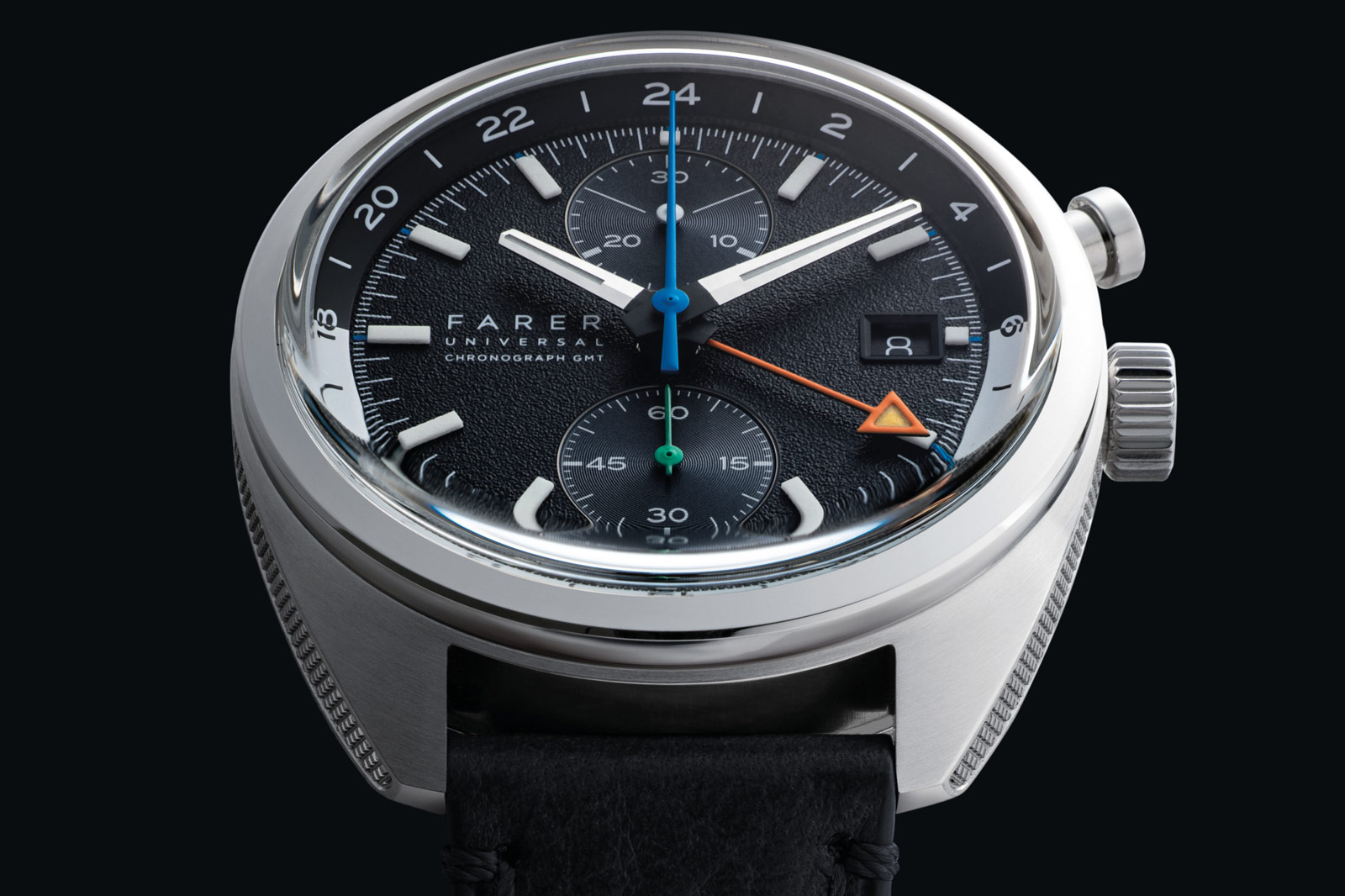
The Segrave features a contrast colour scheme
Because the chronograph layouts are different on each, the models are equipped with different version of the same Sellita movement. The Segrave is powered by Sellita SW536 M MP, while the Cobb utilises the SW530 M MP a. Part of the same SW500 family, the two movements have the same mono-pusher chronograph complication as well as GMT functionality. Notably, the GMT hand can only be set anticlockwise in one hour steps.
Both calibres beat at 28,800 beats per hour and offer 62 hours of power reserve. The only notable difference between the two is the jewel count. The SW530 inside the Cobb has 25 jewels, whereas the SW536 of the Segrave has 29 due to the relocation of the constant seconds to six.
The movements are visible through sapphire backs on both, and look identical in each. They are finished to the highest grade offered by Sellita, which is industrial but still offers details like blued screws as well as snailing and a custom engraved pattern modelled on the Farer arrow logo.
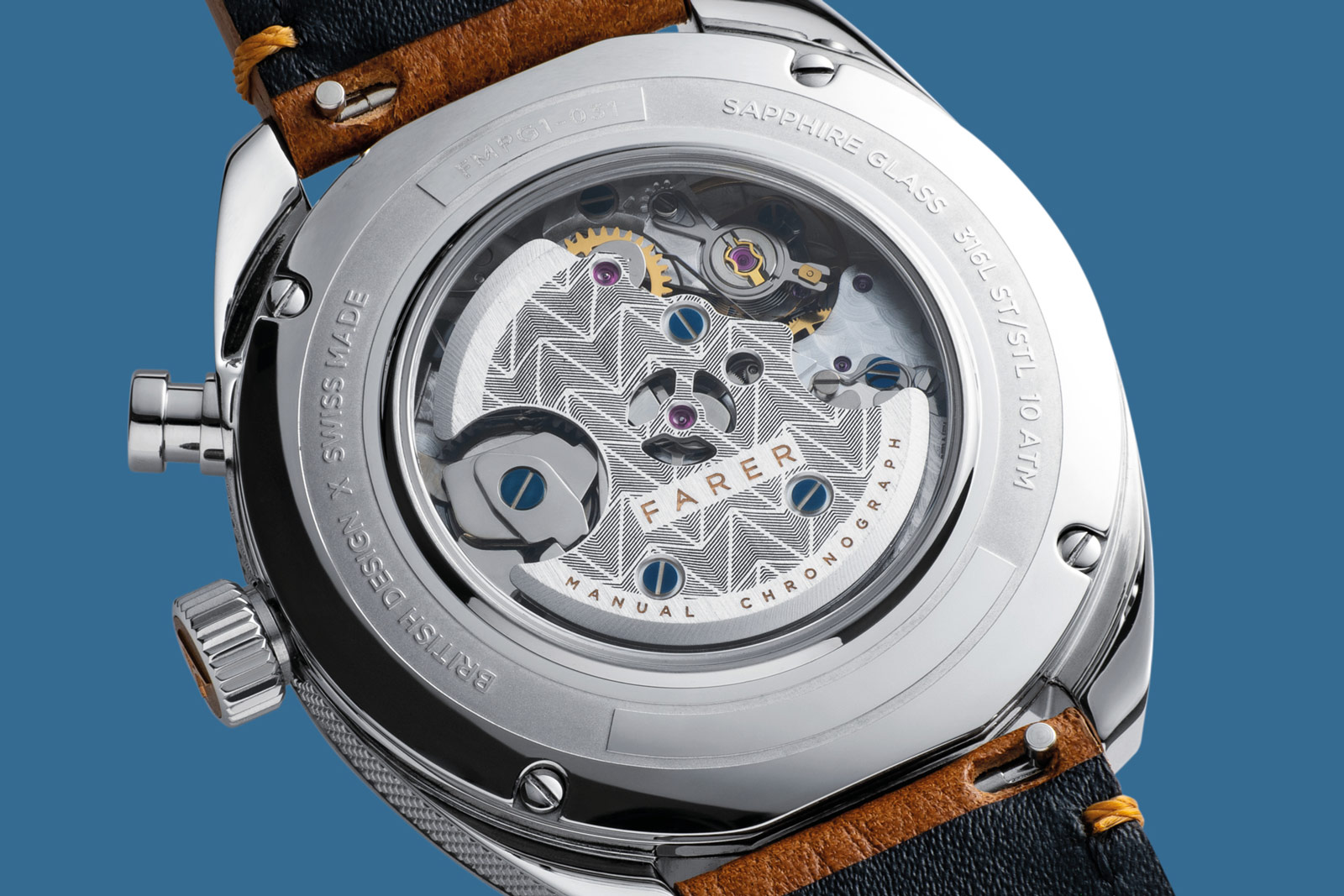
The Sellita SW530 M MP a calibre inside the Cobb
Key facts and price
Farer Monopusher GMT
Ref. Cobb
Ref. Segrave
Diameter: 41 mm
Height: 14.5 mm (including 2.25 mm crystal height)
Material: Stainless steel
Crystal: Sapphire
Water resistance: 100 m
Movement: Sellita SW530 M MP a for Cobb; Sellita SW536 M MP for Segrave
Functions: Hours, minutes, date, small seconds, monopusher chronograph and GMT
Winding: Manual-wind
Frequency: 28,800 beats per hour (4 Hz)
Power reserve: 62 hours
Strap: Supplied on a select quick-release leather strap
Limited edition: No
Availability: Available at Farer boutiques and retailers starting June 2024
Price: US$2,195
For more, visit farer.com
Back to top.

